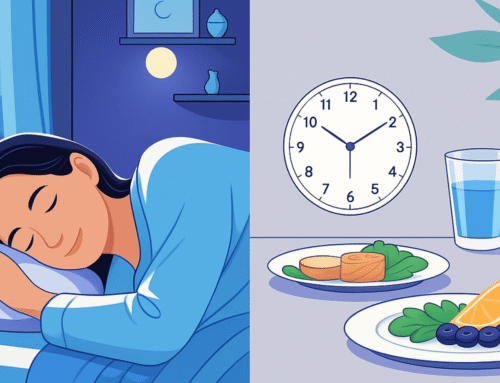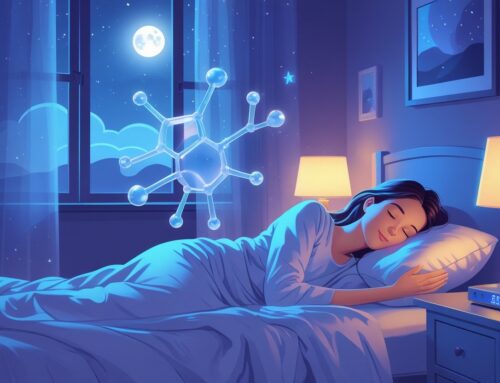Sleep is essential for overall health, but many people do not fully understand the stages of sleep. The sleep cycle consists of several distinct stages and each stage plays an important role in physical and mental restoration. Understanding these stages improves sleep quality and enhances well-being.
Sleep has distinct stages, such as light sleep, deep sleep, and REM sleep. Each stage has specific functions in physical restoration and memory consolidation. Exploring how these phases interact provides valuable insights into sleep patterns, which can ultimately contribute to more refreshing rest.
Establishing a well-structured sleep routine, including mattress selection, can support all stages of sleep. By recognizing the importance of these cycles, individuals can take steps to enhance their nightly rest and overall health.
Key Takeaways
- Understanding sleep stages can improve sleep quality.
- Each sleep stage has distinct functions for health and recovery.
- The REM stage is crucial for processing emotions and reducing stress, which contributes to mental well-being and resilience.
- Proper support, like an appropriate mattress, enhances sleep experience.

Overview of Sleep

Sleep is an essential process that allows the body and brain to rest, recover, and refresh. It has complex cycles and distinct stages that play specific roles in overall well-being. Understanding these cycles and stages is important for anyone looking to improve their sleep quality.
Understanding Sleep Cycles
A sleep cycle typically lasts about 90 to 110 minutes and includes multiple stages. Each person goes through these cycles four to six times each night. During a cycle, the body transitions between deep sleep, light sleep, and REM (rapid eye movement) sleep.
These cycles are important for restoring energy and facilitating crucial functions like memory consolidation. Disruptions to this cycle can lead to issues such as insomnia, fatigue, or cognitive problems. Optimizing sleep requires an awareness of cycle duration and frequency to achieve truly restorative sleep.
Types of Sleep Stages
Sleep is divided into two main phases: non-REM sleep and REM sleep. Non-REM sleep consists of three stages:
- Stage 1 (N1): The lightest sleep stage, where the body begins to relax. This phase only lasts a few minutes.
- Stage 2 (N2): The most common sleep stage, which makes up nearly half of total sleep time. During this period, heart rate slows and body temperature drops.
- Stage 3 (N3): Also known as deep sleep, this is the hardest stage to wake up from. Deep sleep is important for physical recovery and overall well-being.
The REM stage follows non-REM sleep and is characterized by rapid eye movements and dreaming. Each of these stages plays a specific role in developing memory and supporting physical health.
The Role of the Brain in Sleep
The brain controls sleep cycles through various structures, especially the hypothalamus. This part of the brain regulates wakefulness and sleepiness based on the natural light-dark cycle. Additionally, neurotransmitters like serotonin help initiate sleep. Serotonin helps facilitate sleep onset while other chemicals regulate alertness.
Furthermore, during REM sleep, brain activity increases, resembling that of a waking state, which is important for emotional regulation and learning.
Sleep Cycle Dynamics

Understanding the dynamics of sleep cycle is essential for improving sleep quality. Each cycle has specific durations and frequencies that can affect overall restfulness.
Duration of Sleep Cycles
A complete sleep cycle typically lasts between 90 and 110 minutes. This includes stages of both non-REM and REM sleep. The first cycle of the night includes a shorter REM phase, while later cycles gradually extend REM duration. In the beginning, non-REM stages are longer and include deep sleep. As the night progresses, the body spends more time in REM sleep. On average, individuals experience about four to six cycles per night, depending on sleep duration.
Number of Sleep Cycles Per Night
The number of cycles completed each night depends on sleep duration. Adults generally need between seven and nine hours of rest, which is approximately four to six full cycles. For example, if someone sleeps for eight hours, they can expect to complete approximately five cycles. Each cycle supports recovery and memory processing. It is important to wake up at the end of a cycle to feel refreshed.
Calculating Sleep Cycles
Calculating sleep cycles can help individuals optimize their sleep schedule. To determine the best time to fall asleep and wake up, one can start with the desired wake-up time.
Working backwards in 90-minute intervals can identify the ideal bedtime. If someone needs to wake up at 6 AM, going to sleep at 10:30 PM or midnight might be beneficial. This allows completing full cycles and enhances the quality of rest. It is also useful in identifying how many deep sleep cycles a person gets, as deeper stages occur in the first half of sleep.
Distinct Sleep Stages

Sleep is not a single event but rather a complex process involving distinct stages. Each stage plays a vital role in physical and mental health. These stages impact everything from memory to immune function.
Non-REM (NREM) Sleep
Non-REM sleep consists of three stages: N1, N2, and N3.
- Stage 1 (N1) is the lightest phase, lasting about 1 to 7 minutes. As a person transitions from wakefulness to sleep, they might experience a sense of drifting.
- Stage 2 (N2) makes up about 50% of total sleep time, lasting 10 to 25 minutes per cycle. During this stage, body temperature drops, and the heart rate slows as the body prepares for deeper sleep.
- Stage 3 (N3), also known as deep sleep, is essential for recovery. It often lasts 20 to 40 minutes. The body repairs tissues and strengthens the immune system. Waking up during this stage can leave a person feeling groggy.
REM Sleep
Rapid Eye Movement (REM) sleep is essential for cognitive functions such as learning and memory. This phase usually begins about 90 minutes after falling asleep and occurs several times during the night.
Each REM phase lasts longer as the night progresses, starting with about 10 minutes and extending to 30 minutes in later cycles.
The eyes move rapidly under closed eyelids, and dreaming typically occurs during this stage. Muscle activity is intentionally suppressed to prevent acting out dreams.
REM sleep is crucial for emotional regulation and brain health.
Transitional Sleep Phases
Transitions occur when the body shifts between sleep stages. These brief moments happen between NREM and REM sleep, sometimes blending characteristics of both.
If a person wakes up during a transition, they may experience light sleep activity.
Stress, sleep disorders, or external disturbances can cause fragmented transitions and affect overall sleep quality.
Understanding these sleep stages highlights the importance of maintaining a healthy sleep cycle for better rest and well-being.
Analyzing Sleep Patterns

Understanding sleep patterns is essential for determining sleep quality. Analyzing how long someone spends in each sleep stage helps identify if they are getting sufficient restorative sleep.
Average Time in Sleep Stages
A typical sleep cycle lasts about 90 minutes, and most adults go through 4 to 6 cycles per night. Here’s how time is generally distributed across each stage:
- Stage N1 (Light Sleep): 1-7 minutes
- Stage N2 (Moderate Sleep): 10-25 minutes
- Stage N3 (Deep Sleep): 20-40 minutes
- REM Sleep: 20-25% of total sleep time
A person goes through these stages multiple times each night, usually 4 to 6 cycles. Analyzing sleep stage duration can help identify imbalances, such as insufficient deep sleep or disrupted REM cycles.
Sleep Stages by Age
Sleep patterns change throughout a person’s life. Here’s a general breakdown of how average sleep stages vary by age:
- Children: Spend more time in deep sleep (N3), which is vital for growth and development.
- Teenagers: Require more sleep, typically around 9-10 hours, with a significant amount of REM sleep.
- Adults: Typically need 7-9 hours, with more time spent in lighter sleep stages.
- Elderly: Often experience shorter sleep duration and less deep sleep, leading to lighter and more fragmented sleep.
Identifying Healthy Sleep Cycles
Sleep patterns evolve throughout life. Here’s a general breakdown of how sleep stages change with age:
- Regular Cycle Length: About 90 minutes for a full cycle.
- Sufficient REM Sleep: Make up around 20-25% of total sleep time.
- Deep Sleep (N3): Should constitute about 20% of total sleep.
To analyze sleep cycles effectively, using sleep tracking devices or apps can help individuals understand their patterns better. They can review the times spent in different sleep stages, which makes it easier to spot areas for improvement.
How Mattresses Support Every Stage of Sleep

The mattress plays an important role in supporting each stage of sleep. Comfort and support can directly impact sleep quality throughout the night.
- Light Sleep (Non-REM Stage 1 and 2)
During these stages, the body starts to relax and transition into deeper sleep. A mattress provides the right support to maintain proper spinal alignment and ease the body into rest. - Deep Sleep (Non-REM Stage 3)
In deep sleep, the body heals and repairs itself. A supportive mattress helps reduce tossing and turning. This promotes uninterrupted deep sleep, which is essential for physical recovery. - REM Sleep
REM sleep is important for memory and brain function. The right mattress minimizes disturbances. This allows for a more peaceful and restorative dreaming experience.
Comfort Factors
The mattress must balance softness and firmness. A too-soft mattress can cause sagging and affect spinal alignment. A firm mattress may lead to discomfort, disrupting sleep.
Support and Material
Mattresses made with memory foam or hybrid designs often provide better support. These materials can contour to the body shape and help distribute weight evenly. A good mattress adapts to the sleeper’s needs and sleeping positions. This adaptability enhances the overall sleep experience during all stages. For more tips, check out their guide for comfort and support.
The Helix Midnight Luxe is designed to provide the ideal combination of comfort, support, and temperature regulation for a deeper and uninterrupted sleep. With a medium-plush feel, this hybrid mattress is perfect for side sleepers and those who need extra pressure relief. The zoned lumbar support promotes proper spinal alignment, reduces back pain and stiffness, while the gel-infused memory foam provides plush cushioning and helps keep you cool throughout the night.
This mattress also features a quilted pillow top for added softness and a pocketed coil system that enhances support and motion isolation. Regardless if you’re in light sleep, deep sleep, or REM, the Helix Midnight Luxe is designed to minimize disturbances and optimize sleep quality. This mattress is a perfect fit that combines luxury, support, and breathability,
A good mattress supports you through every stage of sleep, helps you fall asleep faster, stay comfortable, and wake up feeling refreshed. When your mattress works with your body, getting a full night of quality rest feels effortless.







